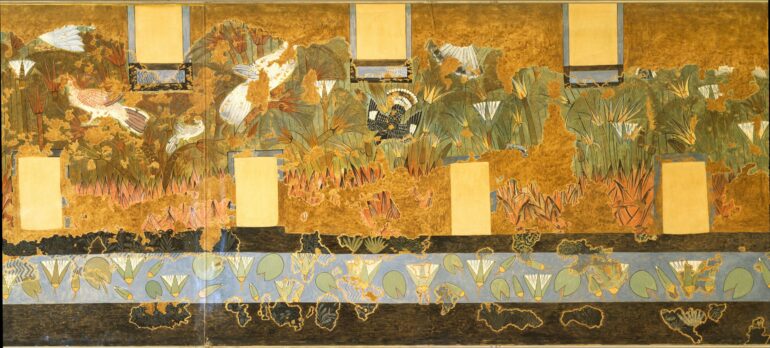A masterpiece of ancient Egyptian art found in a palace is so finely detailed that researchers have been able to pinpoint the bird species it depicts. These images of the natural world likely created a space for relaxation and recreation in the palace.
The artwork was discovered at Amarna, the location of the capital city of Pharaoh Akhenaten (1347–1332 BC). Excavations in 1924 uncovered a palace belonging to Meritaten, daughter of the pharaoh and Nefertiti, with several lavishly decorated rooms. One of these, the so-called Green Room, has a rare depiction of birds in a wild papyrus marsh with no signs of human activity.
“They have since come to be regarded as masterpieces of ancient Egyptian art,” said Dr. Christopher Stimpson and Professor Barry Kemp, “Featured in these paintings are some of the most skilfully rendered and naturalistic images of birds known from Dynastic Egypt.”
Despite the quality of these images, they have received relatively little attention. As such, not all the bird species in the art had been identified in the nearly 100 years since it was found.
“The art of the Green Room has not received as much attention as you would perhaps expect. This may have been because the original plaster panels did not survive well,” said Dr. Stimpson, an honorary associate of Oxford University Museum of Natural History. Attempts at conserving the painting in 1926 accidentally damaged and discolored the artwork.

© Antiquity (2022). DOI: 10.15184/aqy.2022.159
So Dr. Stimpson and Professor Kemp set out to identify the birds of the Green Room. The pair consulted modern ornithological data and a high-quality copy of the artwork made in 1924 by Nina de Garis Davies to identify the birds. Their work is published in Antiquity.
The researchers were ultimately able to identify several species, including shrikes and wagtails. These join the kingfishers and pigeons identified by previous work. They also found that the artists may have included hints for ancient birdwatchers: Migrant birds are annotated with a triangle, perhaps indicating a seasonal element in the art.
The artwork also may show an ancient Egyptian pigeon problem. Rock pigeons are depicted but are not native to the papyrus marshes, instead being associated with nearby desert cliffs.
Perhaps, like in modern cities, pigeons were attracted to the area by human activity.
While the researchers cannot rule this out, they think the artists instead may have included these birds to make the scene seem wilder and untamed—an atmosphere the realistic artwork appears designed to create. The team suggests these images of the natural world have made the Green Room a relaxing place.
“No one knows for sure, although the Green Room was most likely a place of rest and relaxation. Illustrations in rock tombs at Amarna possibly show similar settings where women relax, socialize and play music,” said Dr. Stimpson, “In the Green Room, the atmosphere was likely enhanced by the visions of nature. The calming effects of the natural world were as important then, as they are (more than ever) today.”
More information:
Christopher M. Stimpson et al, Pigeons and papyrus at Amarna: the birds of the Green Room revisited, Antiquity (2022). DOI: 10.15184/aqy.2022.159
Citation:
Researchers identify bird species depicted in ancient, finely detailed Egyptian painting (2022, December 27)



